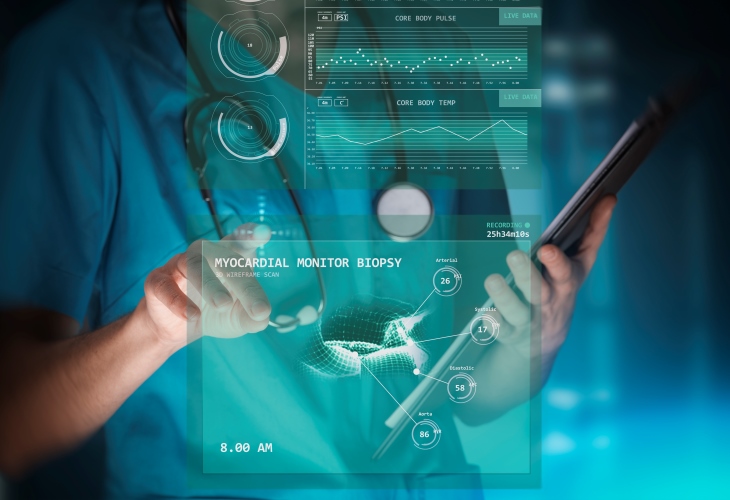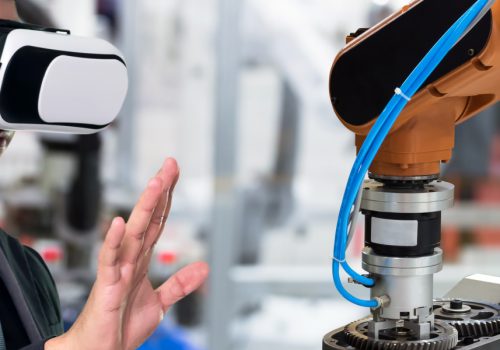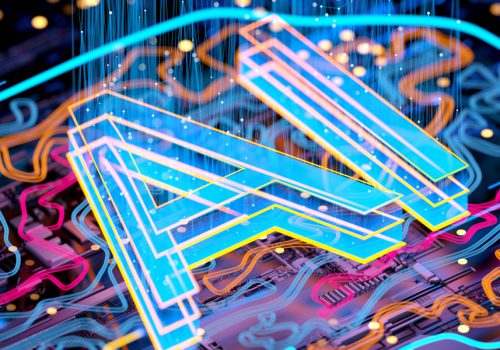Hologram technology has increasingly become a fascination for the general public because of its capabilities and impact in the technology and business sector globally. And who’s to blame them? Consider a hologram as a 3D display, towards the next step in making digital content more human-compatible.
Imagine if a hologram was projected in the middle of your presentation or conference meetings, floating in mid-air, twisting and turning at every graphic detail you call attention to. Or a hologram projected in the middle of your home, showing a 3D concept of a car that you’re talking about and want to purchase online. But there is more: have you heard of holographic telepresence? It’s a holographic image of you projected in a meeting room thousands of miles away from your actual location communicating with partners through a miniature hologram of your physical self. Researchers are also working on the creation of 3D holograms by using smartphone apps capable of creating holograms above the surface of a phone. The applications of the new technology are limitless but the expectations of our societies being transformed into cyber cities with 3D holographic technology is still far off from science fiction movies we’re all familiar with. However, despite the complexity of 3D technology, research is advancing and the commencement of this spectacle is right around the corner.
What is Hologram?
A 3D hologram is a virtual image of a real object that isn’t actually “there,” but it looks like it is, either floating in midair or standing on a nearby surface. Over the years holograms of varying forms have been developed, including transmission holograms like the ones used in music concerts where Frank Sinatra, Tupac Shakur, Michael Jackson and Elvis Presley have been virtually resurrected through an optical illusion digitally formed through a projection trick known as “Pepper’s ghost”. Then, there are rainbow holograms – similar to the ones utilized on credit cards and driver’s licenses for increased security. These holograms can even be found throughout your houses, as part of CD, DVD, BLU-RAY, and software packaging, as well as nearly everything sold as “official merchandise.”
However, these security holograms which help preventing forgery are simple physical holograms that simply change shape and color when tilted. The real three dimensional holograms are the kind that are illuminated with lasers or created in a dark room with careful placement of lighting to create virtual objects that “float” in mid-air and are visible through augmented reality glasses. This technology is known as “augmented reality” or recently referred to as “mixed reality”, a holographic augmented experience where virtual objects are interwoven into our physical reality and become interactive and digitally manipulative through our real-time actions.
This augmented experience should not be confused with AR’s close cousin “Virtual Reality”, as VR is an immersive experience that completely replaces the user’s real-world environment with a simulated one through headset goggles and motion controllers primarily utilized for gaming and training experiences.
How does a Hologram Work?
The science and practice of making holograms is based on a photographic technique that records the light scattered from an object, and then presents itself as a three-dimensional image. The process of making a hologram consists of recording an object (or person) in a clean environment with a laser beam that is applied to a recording medium that will clean up and verify the image.
This causes the laser beam to split in two directions which are redirected towards mirrors. One of the beams is directed at the object. A portion of the light reflects off the object and is recorded by the medium. The second beam (which is called a reference beam) is directed towards the recording medium that coordinates to make a precise image in the hologram location. For that reason, the two laser beams interfere and intersect with each other and that produces an interference pattern that is recorded on the medium to recreate the 3D image. This holographic technology primarily consists of projectors, lasers, hologram tables, augmented device glasses and 3D art programming tools to virtually create an image that brings to reality unreal elements in our surrounding environments.
Applications of Hologram Technology
The technology is becoming ubiquitous, and companies are racing to win market domination. Microsoft has its HoloLens headset, Apple uses ArKit and Google presents holograms in ARCore. This technology area is saturating the tech market and IT mega corporations are racing to dominate the AR market. Even marketing departments are contemplating the idea of impressing customers with experiential marketing campaigns and customer experience interactions through three dimensional images. Digital holography market reported that by the 2020 the market for genuine display holograms was expected to reach up to $5.5 billion. The integration of recent existing hologram technologies is benefiting us in incredible ways and is currently being used in many professions around us such as:
Military Mapping: Through the use of 3D holography, military strategists are utilizing fully dimensional holographic images for high-quality 3D images of terrains for improved reconnaissance and effective geographic intelligence. The “battle spaces” of 3D holographic maps will allow soldiers to view three-dimensional terrain, look “around” corners, and train in missions involving disaster evacuation and military rescue scenarios.
Medical Data: Holographic technology is on its way to revolutionizing medicine. The current use of 3D images is being used for visualizing patient data in training students and surgeons. Current systems like magnetic resonance imaging and ultrasound scans can generate complex data using advanced imaging technology. These images can include the incredibly complex organs and systems of the body, like the brain, heart, lungs, nerves and muscles.

Fraud and Security: Hologram transmissions are also being used as an incredible advantage in commercial security, as they have proven to be incredibly difficult to forge. Banknotes in the UK are using holography to produce a set of changing colors as you tilt the note, just like credit cards utilize the small silver rectangle of a white to verify its authenticity.
High Information Security Storage: Though holograms have proven to create fascinating imagery, they can also be used for storing huge amounts of data with their realistic 3D details system. A hologram is capable of storing an unthinkable amount of data. This means that data is stored in three dimensions so it is overlapped and is more reliable and secure.
Art: Recently, an exhibition in central London at the Tate Modern gallery held by The Digital Maker Collective, presented a show of holographic artworks of the future. Through the arts, they explored how holography can move beyond everyday consumption and technology as a spectacle. They challenged the integration and production of technology in our lives, society, work, education and in the creative arts by exploring and re-thinking its impact.
Future Hologram Technology
The future of holographic technology is said to be a game changer, set to revolutionize industries beyond the conventional standards we live in today. In this article, we’ve only discussed a few examples of the recent developments in hologram technology, however the potential applications for holography are endless.
Scientists have come up with new lasers inventions, modern digital processors and motion sensing technologies, to create several different types of holograms which could change the way we consume and interact with three-dimensional objects in the near future. These new holographic technologies known as the no-logram, table hologram, physical hologram and 3D volumetric technology, seem to be the most innovative creations made so far by scientists in the field. You can get more information about these details here. The systems of these latest holograms have made it possible to interact, track the motion of audiences without a camera, use no headset or motion controller devices to see 3D objects and create higher definition and realistic feelings.

The future integration of hologram technology in different sectors is thought to revolutionize certain industries like space research, medical research, information storage, architecture, non-photorealism and even entertainment. Holograms have the potential to dramatically improve training, design, and visualization in many business settings and production facilities, being able to look at, zoom in and manipulate 3D versions of in-progress designs. This technology, of course, is still in its early stages and there’s a long way to go. Moreover, in terms of Information Security, holograms will prove vastly useful and powerful for enterprise applications. However, in terms of GDPR regulations and ISO certifications, how will companies that will use holography in the near future safeguard confidentiality of private information? Until then, there are no limits to how this technology could be used.
Fax me the facts, and I’ll telegram a hologram – SAUL WILLIAMS









